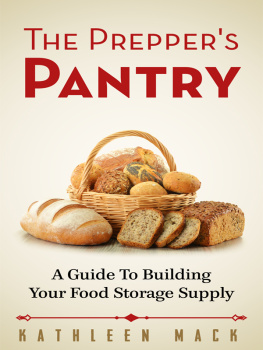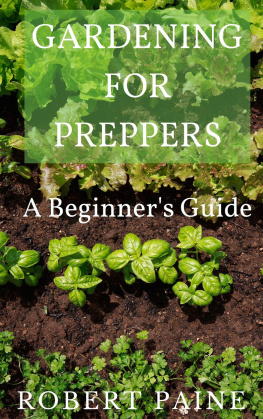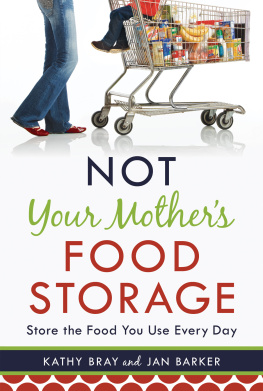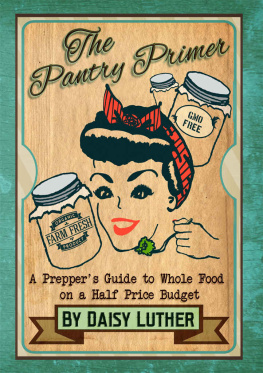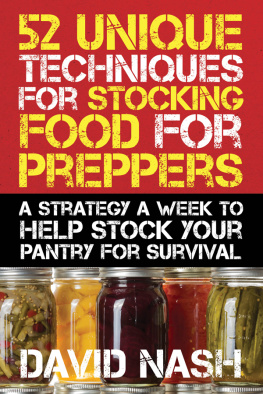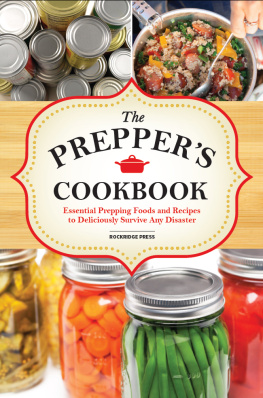
Text copyright 2013 Julie Languille.
Design and concept 2013 Ulysses Press and its licensors.
All Rights Reserved. Any unauthorized duplication in whole or in part or dissemination of this edition by any means (including but not limited to photocopying, electronic devices, digital versions, and the Internet) will be prosecuted to the fullest extent of the law.
Published in the U.S. by
Ulysses Press
P.O. Box 3440
Berkeley, CA 94703
www.ulyssespress.com
ISBN: 978-1-61243-317-2
Library of Congress Control Number 2013947590
10 9 8 7 6 5 4 3 2 1
Acquisitions Editor: Kelly Reed
Managing Editor: Claire Chun
Editor: Bill Cassel
Proofreader: Elyce Berrigan-Dunlop
Front cover design: Double R Design
Interior layout and design: what!design @ whatweb.com
Cover photos: chili Paul Cowan/shutterstock.com, tomato soup Kitch Bain/shutterstock.com, cereal Malgorzata Zdunek/shutterstock.com, pasta BW Folsom/shutterstock.com, plastic bottle Picsfive/shutterstock.com, tin can Matthew Cole/shutterstock.com
Distributed by Publishers Group West
IMPORTANT NOTE TO READERS: Trademarks of businesses and food brands mentioned in this book are used for informational purposes only. No sponsorship or endorsement by, or affiliation with, the trademark owners is claimed or suggested by the author or publisher.
To Larry, my sweet husband, and Alex, Kaylah, and Matt.
Thank you for letting me follow my heart and for your help and patience along the way.
Table of Contents
Storage Tips
HELLO AND WELCOME to Preppers Food Storage: 101 Easy Steps to Affordably Stock a Life-Saving Supply of Food. Congratulations on beginning (or continuing) your journey in food storage. This book is intended to be a helpful resource for everyone, from those just beginning to consider their food storage to those who are already well underway. Preparing your family for a variety of challenging circumstances is a really good idea and I congratulate you for having the wisdom and foresight to be prepared for whatever may come.
It could be that your family will never need its long-term food storage, and I hope that is the case. But if you do find yourself in trying circumstances, your preparedness may mean the difference between life and death; and even if no hardship befalls your family, you will at the very least sleep better knowing you are prepared.
Organization of This Book
This book is organized into 101 steps. The intent of this is to reduce what can seem like a very daunting task into a series of reasonable steps. Each step includes an item or items to store, an indicator of costs, where you might buy the item, how to store it, how long it will last, what equipment you might need to use it (such as a can opener or a grain mill), and a recipe to get you started. Most recipes are for meals to eat right away, but there are also some meal-in-a-jar recipes that enable you to prepare meals in advance and have them ready to go at a moments notice.
In my family, when presented with a big or challenging task, we ask each other the rhetorical question, How do you eat an elephant? The answer is, of course, One bite at a time! Our hope with this book is to divide the work of creating your family food storage into easily manageable steps. Plan to complete a couple of steps per week and you will build your storage in about a year. If you are an overachiever, you can double that and have it done in half the time! Depending on your budget and the size of your family, you may choose to divide some higher-cost items into two or three steps. Thats perfectly OK. Just work on each step in the book and mark it done when it is complete.
The goal here is to figure out what you need, plan your approach, get started (sometimes the hardest step), and then just keep going. Be very intentional about your efforts. You will immediately be better prepared, and after some time of being diligent and intentional, youll find you have the vast majority of what you need.
How to Use This Book
The steps are ordered here in rough order of importance, from very high priority to high, medium, and low. Within each priority level, items are divided into categories to make them easier to find. Those categories are:
Canned Goods
Dairy (and Dairy Substitutes)
Drinks (and Drink Mixes)
Fats
Pantry Staples
Produce (Fresh and Dried)
Sundries and Household Items
Sweets and Sweeteners
Of course, you should adjust the plan to fit your budget, priorities, and schedule. If a trip to town finds you at Costco, we hope youll have this book close at hand. Flip through and look for items best bought at Costco, and knock out as many as your budget and time allow.
Mark your progress as you go. It might be your plan to store 2000 lbs. of wheat, but you might choose to do that 100 lbs. at a time. Keep track of your progress as you go and mark each step as done when you have purchased as much as planned.
COST INDICATORS (1-year supply)

Select Your Target
Planning your food storage starts with determining what your goal is. Start with the number of people in your family, including any likely guests or visitors. In my house, I have an immediate family of four. I also have an elderly relative and extended family of four who are my neighbors, as well as an adult grown son who would arrive at my door with at least one friend in tow. It adds up fast, doesnt it? You also need to think about having a portion to share if your budget allows.
What about children? They require fewer calories than adults, except when they become teens; then their caloric needs are about the same as, or even greater than, an adults (depending on activity level). The other factor is that though your children may be small now, your long-term food storage will last for 30 years and they will be adults in that timeframe. I count children as adults, knowing that a near-term emergency would leave me with some extra capacity (always a good thing) and that in the long run Ill still have enough food. Children do require extra milk, so plan accordingly.
Next, determine how long a period of time youd like to store for. Start by considering the area of the country in which you reside and determine the likely natural disaster scenarios. Where I live, power outages and major storms happen almost every year and sometimes more than once a year. Earthquakes occur regularly and tsunamis are possible. What is the likelihood in your area of the country that you would be unable to rely on external resources, and how long would you like to be able to be independent? Previously I lived near the epicenter of the Northridge earthquake; we were without power and water for nearly two weeks. Now that I live in a more vulnerable area, because I live on an island and we rely on ferry service, I would consider a month would be the minimum to plan for.
What would be the maximum time to plan for? Let me take a page from my ancestors. I am part English and Swedish on my mothers side, but on my fathers side, I am Native American. What did the Native Americans, who lived and worked this land before Europeans arrived, do? They grew gardens, harvested an annual harvest, and then dried their foodstuffs, plants, meat, and fish. Their goal was always to have a two-year supply of dried food on hand in case the next years harvest failed. Its hard to imagine, isnt it? Our ancestors were likely better prepared for disaster than we are, because they had to be. This, I believe, is why we hear that little voice inside that calls us to put up food. It is ingrained in our survival as a species. I feel that pull. Do you?
Next page

